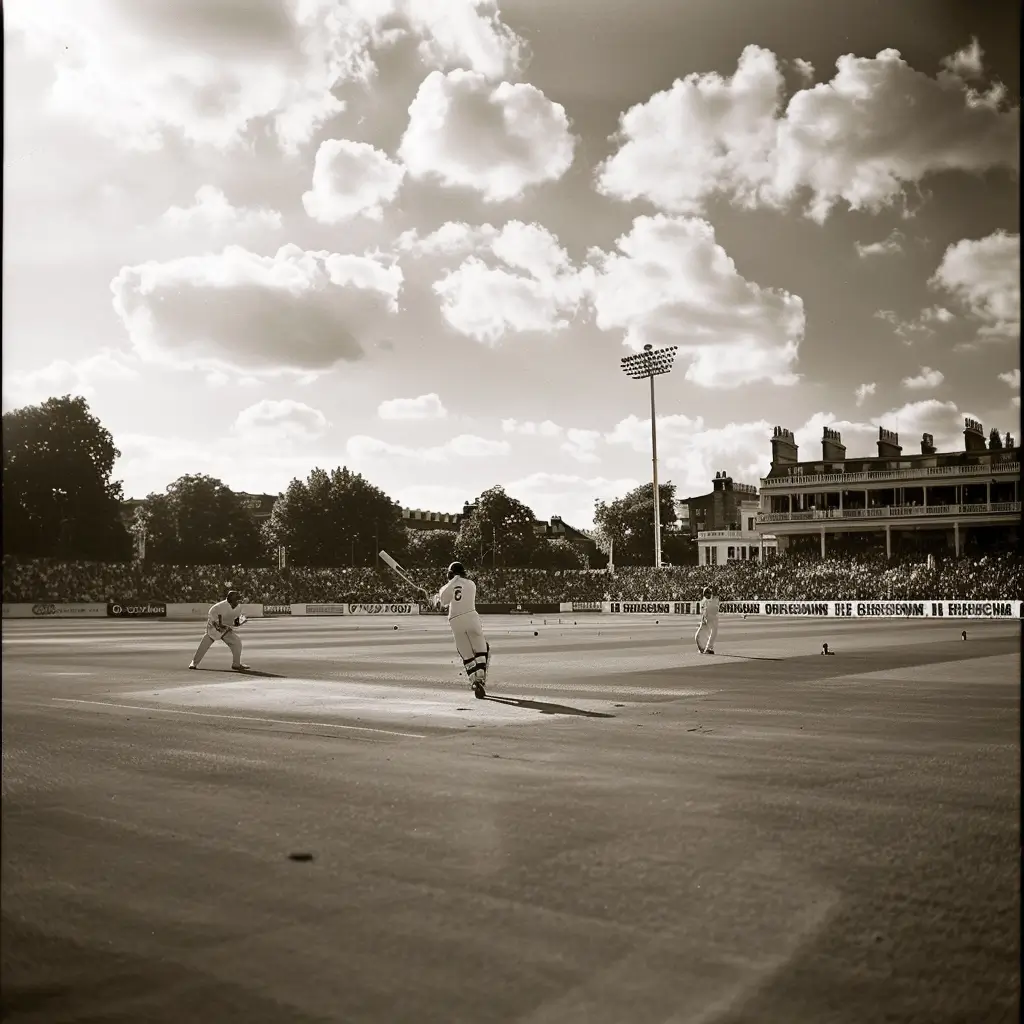Cricket, often considered the quintessential English sport, is revered in the UK’s cultural and sporting landscape. From picturesque village greens to grand international stadiums, cricket’s presence is felt throughout the country. This article delves into the fascinating world of cricket in the UK, exploring its history, notable players, iconic grounds, and cultural impact.
History of Cricket in the UK
Origins of the Game
Cricket’s roots trace back to the late 16th century, with its earliest origins in southeast England. Initially a children’s game, it gradually gained popularity among adults and evolved into the sport we recognize today. The game was formalized with the establishment of the Marylebone Cricket Club (MCC) in 1787, which played a pivotal role in codifying the laws of cricket.
Early Development
By the 18th century, cricket had become popular among the English aristocracy. Matches were often grand social events, attracting large crowds. The sport’s early development was marked by the creation of county clubs, with Kent and Sussex among the first to form organized teams.
The Victorian Era
The Victorian era saw cricket become deeply embedded in British culture. The introduction of the County Championship in 1890 provided a structured competitive framework, further enhancing the sport’s popularity. This period also witnessed the rise of legendary players like W.G. Grace, whose contributions significantly shaped the game’s history.
Post-War Cricket
The aftermath of World War II brought significant changes to cricket in the UK. The game became more professional, and the 1960s and 1970s saw a surge in international competition. England’s cricket team experienced triumphs and challenges, with memorable series such as the Ashes against Australia capturing the nation’s imagination.
Modern Developments
In recent decades, cricket has continued to evolve. The introduction of limited-overs formats, such as One Day Internationals (ODIs) and Twenty20 (T20), has revolutionized the game, making it faster-paced and more viewer-friendly. England’s historic victory in the 2019 ICC Cricket World Cup marked a new high point for the sport in the UK.
Cricket Grounds in the UK
Iconic Stadiums
The UK boasts some of the most iconic cricket grounds in the world. Lord’s Cricket Ground in London, often called the “Home of Cricket,” is renowned for its historical significance and beautiful setting. Another landmark venue, the Oval, has hosted numerous memorable matches, including the first-ever Test match in England in 1880.
Lesser-Known Grounds
While the significant stadiums garner much attention, the UK is also home to numerous lesser-known but equally charming cricket grounds. Places like Hove, Taunton, and Chester-le-Street offer intimate settings and a unique cricketing experience. These venues often host county matches and are integral to the domestic cricket scene.
Importance of Grounds in Cricket Culture
Cricket grounds in the UK are more than just places to play; they are cultural landmarks. These venues host community events, concerts, and other activities, making them central to local life. The tradition of taking a picnic to the cricket ground and spending a leisurely day watching the game is a cherished British pastime.
Domestic Cricket Structure
County Cricket
The backbone of domestic cricket in the UK is the County Championship, comprising 18 first-class county clubs. This competition, steeped in history, is a proving ground for aspiring cricketers and a source of pride for fans. The championship is divided into two divisions, promoting a competitive spirit and high play standards.
T20 Leagues
The advent of T20 cricket has brought a fresh dynamism to the domestic scene. The Vitality Blast, the premier T20 competition in England, attracts international stars and offers thrilling entertainment. The success of the T20 format has also paved the way for The Hundred, a new tournament designed to attract a broader audience with its innovative rules and fast-paced action.
Women’s Cricket Leagues
Women’s cricket in the UK has seen remarkable growth in recent years. The Kia Super League, followed by the Women’s Hundred, has provided a platform for female cricketers to showcase their talents. England’s women’s team, a formidable force on the international stage, has inspired a new generation of girls to take up the sport.
International Cricket in the UK
England National Team
The England national cricket team, representing the pinnacle of the sport in the UK, has a storied history. The team has produced many cricketing greats, from legendary captains like Mike Brearley and Andrew Strauss to contemporary stars like Joe Root and Ben Stokes. England’s Ashes battles with Australia remain some of the most eagerly anticipated fixtures in the sport.
Memorable Matches
Over the years, the UK has hosted countless memorable international matches. The 2005 Ashes series, often the greatest ever, saw England dramatically reclaim the urn. More recently, the 2019 World Cup final at Lord’s, where England clinched the title in a nail-biting finish against New Zealand, stands as a testament to the thrilling nature of the sport.
Key International Tournaments
The UK regularly hosts major international cricket tournaments. In addition to the ICC Cricket World Cup, England has been the venue for numerous Champions Trophy events and T20 World Cups. These tournaments bring the world’s best cricketers to the UK and foster a sense of global cricketing camaraderie.
Notable Players in UK Cricket
Legends of the Past
The annals of British cricket are filled with legendary figures who have left an indelible mark on the game. W.G. Grace, often considered the father of modern cricket, was a pioneering figure whose influence extends beyond the playing field. Sir Jack Hobbs, Sir Len Hutton, and Sir Ian Botham are other names that resonate with cricket enthusiasts.
Modern Stars
Today’s cricketing landscape in the UK is adorned with stars who continue to inspire and entertain. Players like Alastair Cook, James Anderson, and Stuart Broad have etched their names in the record books with their exceptional performances. Their contributions have been instrumental in England’s recent successes on the international stage.
Rising Talents
The future of UK cricket looks bright, thanks to a new generation of talented players. Young cricketers like Ollie Pope, Sam Curran, and Jofra Archer have already significantly impacted the highest level. Their emergence ensures that the rich tradition of British cricket will continue to thrive.
Impact of Cricket on UK Culture
Cricket in Media
Cricket enjoys extensive coverage in British media, with dedicated television channels, radio broadcasts, and online platforms. Iconic commentators like Henry Blofeld and Michael Atherton have become synonymous with the game, providing insightful analysis and adding to the sport’s charm. Cricket’s presence in literature and film further cements its cultural significance.
Cricket and British Identity
Cricket is more than just a sport in the UK. It reflects British identity. The game’s values of fair play, sportsmanship, and resilience resonate deeply with the British public. Cricket matches, whether at the local or international level, bring communities together, fostering a sense of unity and pride.
Grassroots Cricket
Grassroots cricket is vital in nurturing talent and promoting the sport at the community level. Local clubs and schools provide opportunities for young players to develop their skills and passion for the game. Initiatives like All Stars Cricket and Chance to Shine aim to make cricket accessible to children from diverse backgrounds, ensuring the sport’s growth and inclusivity.
Future of Cricket in the UK
Innovations and Changes
The future of cricket in the UK is poised for exciting innovations and changes. Introducing The Hundred format represents a bold step towards modernizing the game and attracting new audiences. Technological advancements, such as Hawk-Eye and Decision Review System (DRS), enhance the sport’s accuracy and entertainment value.
Youth Development Programs
Investing in youth development is crucial for cricket’s sustained success in the UK. Programs aimed at identifying and nurturing young talent are essential. The England and Wales Cricket Board (ECB) has implemented various initiatives to support young cricketers, providing them with the necessary resources and opportunities to flourish.
Sustainability and Cricket
As environmental concerns become increasingly important, the cricketing community in the UK is embracing sustainability. Efforts to reduce the carbon footprint of significant events, promote eco-friendly practices at stadiums, and encourage fans to adopt greener habits are gaining momentum. Sustainable cricket ensures that the sport remains viable and responsible in the face of global challenges.
Cricket in the UK
Cricket in the UK is a testament to the sport’s enduring appeal and cultural significance. From its humble beginnings to its current status as a global phenomenon, cricket has woven itself into the fabric of British society. The passion and dedication of players, fans, and administrators ensure that cricket in the UK will continue to thrive and inspire future generations.
Conclusion
Cricket in the UK is a rich tapestry of history, culture, and sporting excellence. Its evolution from a quaint pastime to a globally recognized sport reflects the passion and dedication of those involved. As cricket continues to innovate and adapt, it remains an integral part of British life, inspiring new generations to take up the bat and ball. The future of cricket in the UK is bright, promising more thrilling matches, legendary players, and unforgettable moments.
FAQs
What are the origins of cricket in the UK?
Cricket originated in southeast England in the late 16th century. Initially a children’s game, it gradually gained popularity among adults and became formalized with the establishment of the Marylebone Cricket Club (MCC) in 1787.
Which are the most iconic cricket grounds in the UK?
The most iconic cricket grounds in the UK include Lord’s Cricket Ground in London, known as the “Home of Cricket,” and The Oval, which has hosted numerous historic matches, including the first Test match in England.
How has T20 cricket impacted the domestic scene in the UK?
T20 cricket has revolutionized the domestic scene in the UK by introducing a faster-paced and more viewer-friendly format. Competitions like the Vitality Blast and The Hundred have attracted international stars and increased the sport’s popularity.
Who are some of the notable players in UK cricket history?
Notable players in UK cricket history include W.G. Grace, Sir Jack Hobbs, Sir Len Hutton, Sir Ian Botham, Alastair Cook, James Anderson, and Stuart Broad. These players, with their exceptional performances, have left an indelible mark on the game.
What role does grassroots cricket play in the UK?
Grassroots cricket is vital for nurturing talent and promoting the sport at the community level. Local clubs and schools provide opportunities for young players to develop their skills, ensuring the growth and inclusivity of cricket in the UK.
What is the future of cricket in the UK?
The future of cricket in the UK looks promising with innovations like The Hundred format, technological advancements, and a strong focus on youth development and sustainability. These efforts ensure that cricket remains a vibrant and evolving sport.



No comment